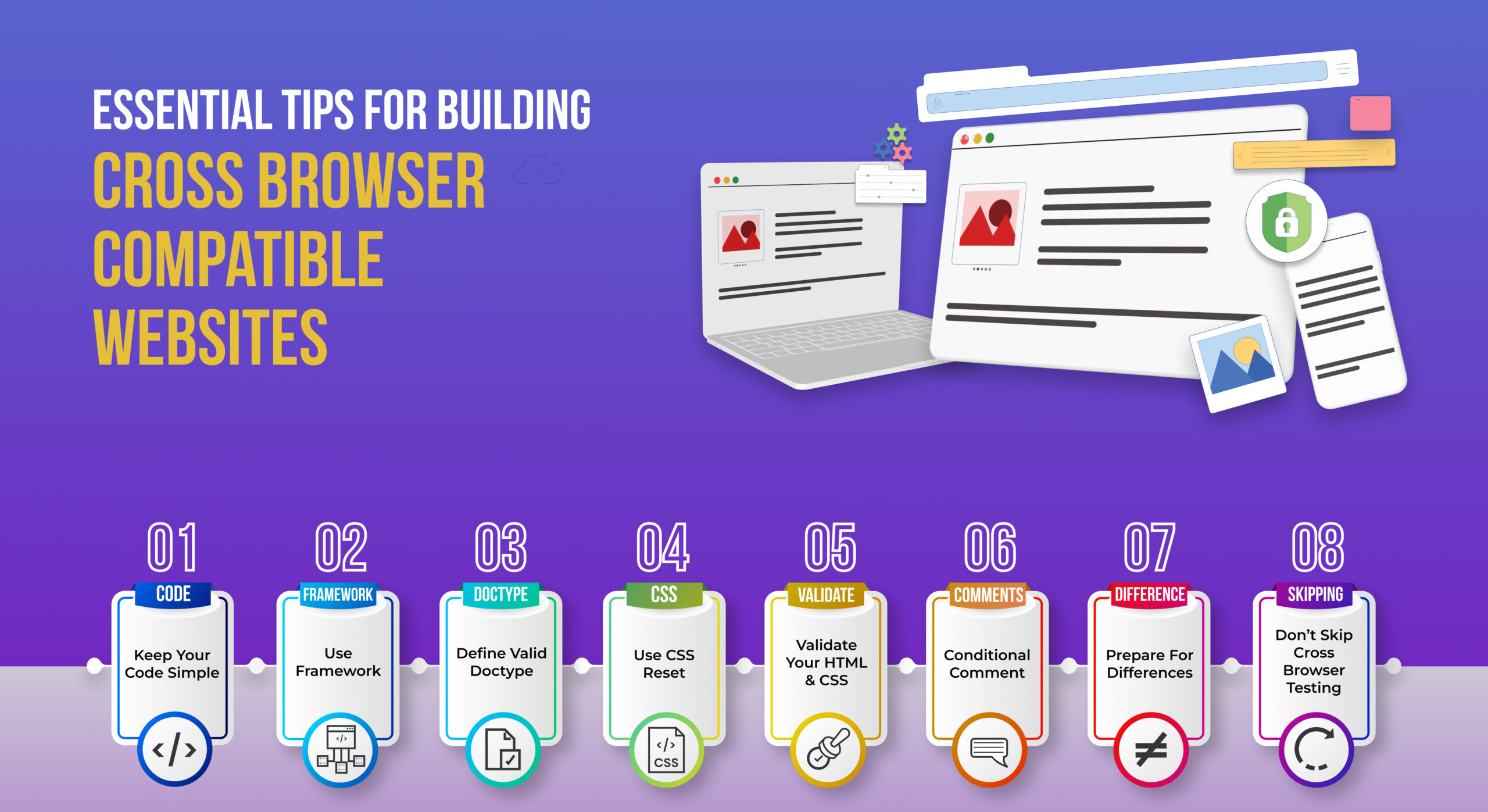What is Cross Browser Compatibility?
Today, the world of web design is filled with multiple browsers and devices. As a web designer, it’s important to ensure that your website looks great on all of them. In this article, we’ll explore some essential tips for building a cross-browser-compatible website. From testing different combinations of browsers and devices to utilizing modern development tools, learn how you can create an amazing website that works perfectly on any device.
Benefits of Cross-Browser Compatible Websites
There are many benefits of cross-browser-compatible websites. Perhaps the most obvious benefit is that they can be accessed by a wider range of users. This is especially important if you want your website to be accessible to as many people as possible.
Another benefit is that cross-browser-compatible websites tend to be more user-friendly. This is because they have been designed to work well with a variety of different browsers, which means that users should have no trouble navigating them.
Finally, cross-browser-compatible websites tend to be more reliable and stable. This is because they are less likely to experience problems when new browsers are released or when updates are made to existing browsers.
Tips for Ensuring Cross-Browser Compatibility
When it comes to cross-browser compatibility, there are a few things you need to keep in mind. First and foremost, you need to make sure that your website can be accessed and viewed on all major browsers. This means testing your site on different browsers and making sure that everything works properly.
In addition, you need to be aware of the different browser versions that are out there. Not all users will be using the latest version of their browser, so you need to make sure that your site is compatible with older versions as well.
Finally, you need to pay attention to the different screen sizes and resolutions that people use. Different browsers render websites differently depending on the resolution, so you need to make sure that your site looks good on all types of screens.
By following these tips, you can be sure that your website will be accessible to everyone and look great no matter what browser or device they’re using.
How to Build a Cross-Browser Compatible Website
When it comes to building a cross-browser-compatible website, there are a few essential tips you need to keep in mind. First, you need to make sure that your website is designed using web standards. This means using valid HTML and CSS code, as well as ensuring that your website works properly on all major browsers.
Another important tip is to test your website on all major browsers before launch. This way, you can be sure that everything works as it should and that there are no compatibility issues. Finally, always keep your website up-to-date with the latest browser versions to ensure continued compatibility.
Testing Tools and Techniques
To ensure that your website is cross-browser compatible, it is important to test it using a variety of different browsers. There are several different testing tools and techniques that you can use to do this.
One of the most important things to do when testing your website is to test it on all major browsers. You should also test your website on mobile browsers such as the iPhone and Android. It is also important to test your website on different operating systems.
Another thing to keep in mind when testing your website is that different people have different screen resolutions. So, you should also test your website at different screen resolutions.
There are a few different tools available that can be used to test your website’s design and functionality before publishing it. One popular tool is called BrowserStack. BrowserStack allows you to test your website on a variety of different browsers and operating systems. Another popular tool is called CrossBrowserTesting.com. Cross Browser Testing also allows you to test your website on a variety of different browsers and operating systems.
Once you have tested your website on all major browsers and operating systems, it is important to make sure that all of the features of your website work correctly. This includes forms, links, images, videos, etc.
Key Takeaway
When it comes to Cross-browser Web App Development, there are a few essential tips you need to keep in mind. Primarily, always test your website in multiple browsers before launching it. This will help ensure that your website looks and functions as it should in all browsers.
Another important tip is to use web standards when coding your website. This will help ensure that your website is rendered correctly in all browsers. Finally, be sure to keep your website up-to-date with the latest browser versions. By following these tips, you can build a cross-browser-compatible website that will provide a great experience for all users.

